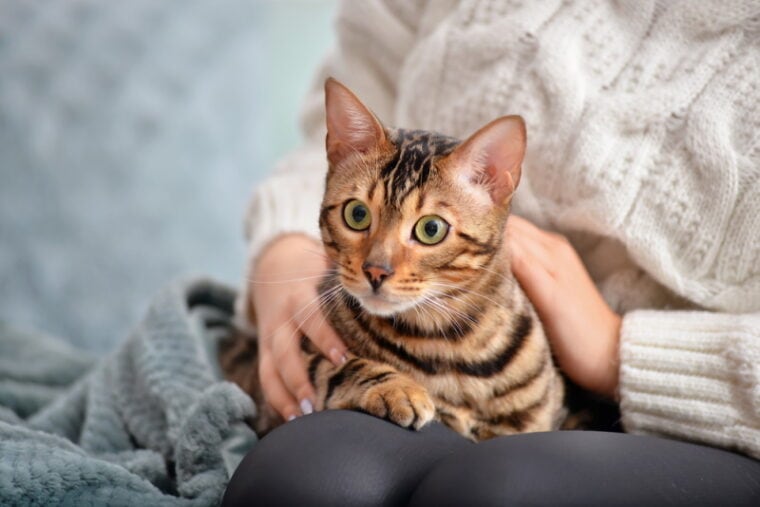
Click to Skip Ahead
Cats are incredibly witty and nimble creatures. They rely on agility, strong joints, and mighty muscles to survive and prosper. Unfortunately, felines can suffer from osteoarthritis (commonly called arthritis)—a degeneration of the joints that causes the pet pain and limits its abilities. It’s a degenerative disease, one that strikes 90% of senior cats (12 years of age and older).
Thankfully, there are quite a few tried-and-true tips and tricks that you can use to help your fur baby cope with arthritis. We’re talking about orthopedic beds, heated pads, and pain management medication, to name a few. Join us, and let’s talk about all the things we can do to aid our furballs in their fight against joint inflammation!

What Is Arthritis? How Does It Affect Cats?
When we’re talking about arthritis in cats, we’re mostly referring to osteoarthritis. This condition (often called degenerative joint disease) is caused by “mechanical” wear and tear of bones/joints. In most cases, arthritis targets the hips, knees, spine, and elbows of a cat, but any joint can also be affected. And the longer it’s left untreated, the more severe the symptoms become.
One of the main causes of arthritis in cats is age, but it can be triggered by other things, including:
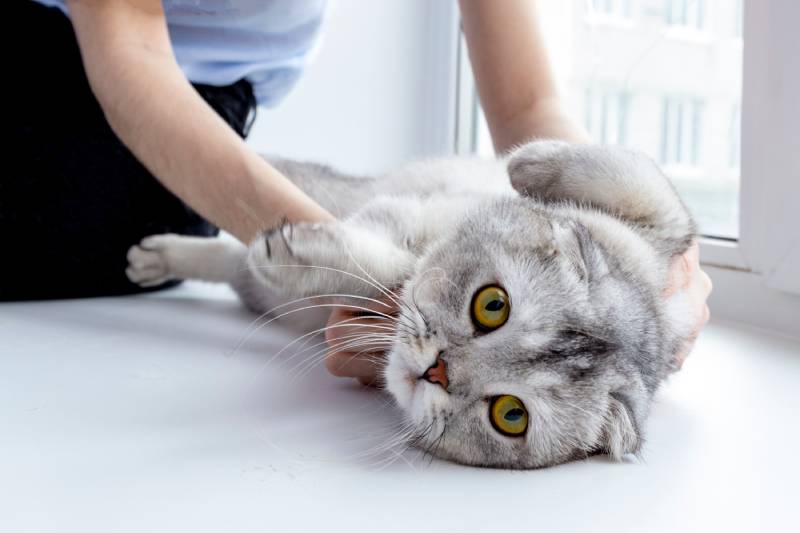
Common Signs of Joint Inflammation in Felines
Signs of arthritis can be very subtle at the beginning, but you may notice decreased activity, stiff gait, slight limp, lack of appetite, whining at night, and other changes in the pet’s behavior. Here are the most common side effects of joint inflammation in a cat:1

The 7 Tips and Tricks for Helping a Cat With Arthritis
1. Start With an Orthopedic Bed
Cats are big fans of hitting the sack, taking catnaps, and even faking sleep. On average, they spend up to 12–18 hours snoozing away. And if the cat is suffering from arthritis, it will probably need even more rest. That’s why veterinarians recommend buying an orthopedic bed the second your cat is diagnosed with joint inflammation.
The bed should be soft and take zero effort for the pet to get in and out of. Avoid buying a bed that’s too high for a cat with problematic joints to reach. True, you can always lend a hand, but the furry champ would still like to climb the bed on its own. Provide the cat with ramps leading to its bed, favorite couch, shelves, and window seats.
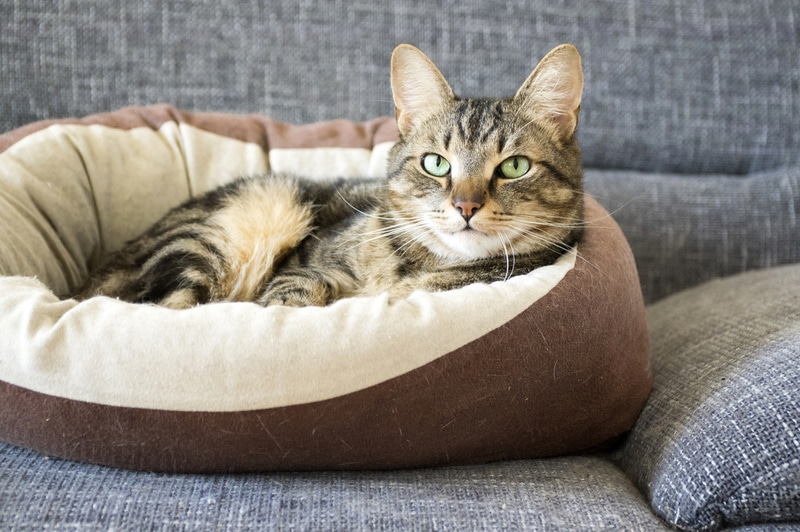
2. Invest in a Cat Heating Pad
Our fluffy companions like to stay warm. They get cozy on the softest and warmest spots on the bed/couch, climb the top shelves, or rest on the roof to soak up the sun. A cat heating pad should keep the pet comfortable while it’s dealing with arthritis. Don’t worry; you won’t have to spend a fortune on it.
On average, a solid-quality cat pad will only set you back $20–$40 or less. Look for a pad with timer options, different temperature settings, and a washable cover. Soft velvet and wool are the best materials for a pad, as they will keep the cat comfy. An auto-off feature, rubber reinforcement, and stainless-steel cord will come in handy as well.
Do not leave your cat unsupervised when using a heating mat and do regular checks to ensure it is functioning correctly. Only use those meant for animals. Human heating pads can get too hot and cause burns.
3. Don’t Forget to Trim Their Nails!
No matter how tough life is for your cat because of joint inflammation, you still need to keep up with a strict grooming schedule. That includes regular brushing and cleaning the pet’s teeth. Your cat won’t be able to groom themself as before since trying to do so might lead to painful movements.
Cats with arthritis also have a harder time to scratch and file their nails. Pay attention to the cat’s claws. If they grow too long, they can become embedded in your cat’s pads. Long nails make it harder for a furry bud to move around. So, how often should you do it? On average, it’s recommended to trim the furball’s paws once in 2–3 weeks.2
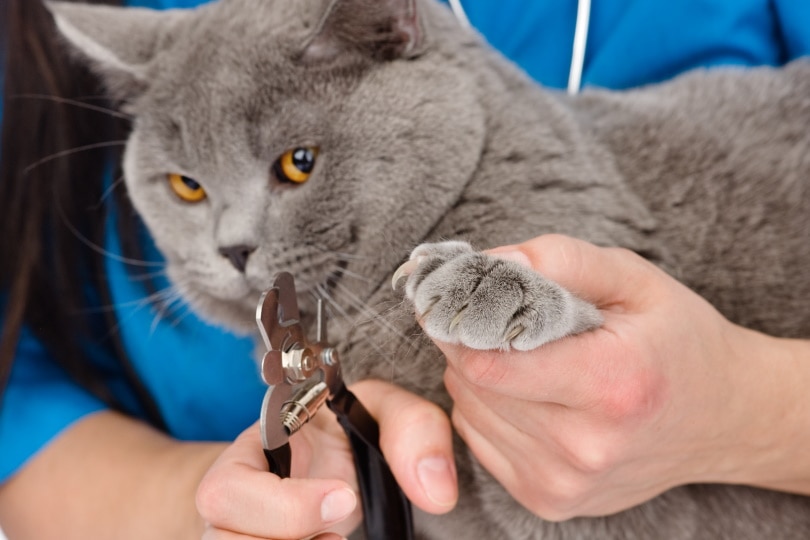
4. Implement Moderate Exercise
To maintain muscle mass and keep the joints active, your cat’s veterinarian might recommend short, moderate exercise sessions once or twice a week. However, if the inflammation is severe, that will cause the pet pain instead of fixing anything. So, unless the vet gives you the “green light,” don’t force your cat to exercise.
5. Keep Everything on the First Floor
When a cat is struck by arthritis, even the most basic things like walking can make it uncomfortable or hurt its joints. That’s why you need to keep everything within reach. And by that, we mean its bowls (both for the food and the water) and the litter box. If the cat wants to, it will try and overcome longer distances around the house to stretch its legs.
But it shouldn’t have to put a big effort to get some food or water. Ramps are only necessary for beds/shelves. For the bowls, all you have to do is place them on a slightly elevated spot. As for the litter box, see that it has very low sides or multiple entries and that the cat isn’t forced to move around it to find the door or jump in and out. Also, make all the surfaces in the house slip-proof.
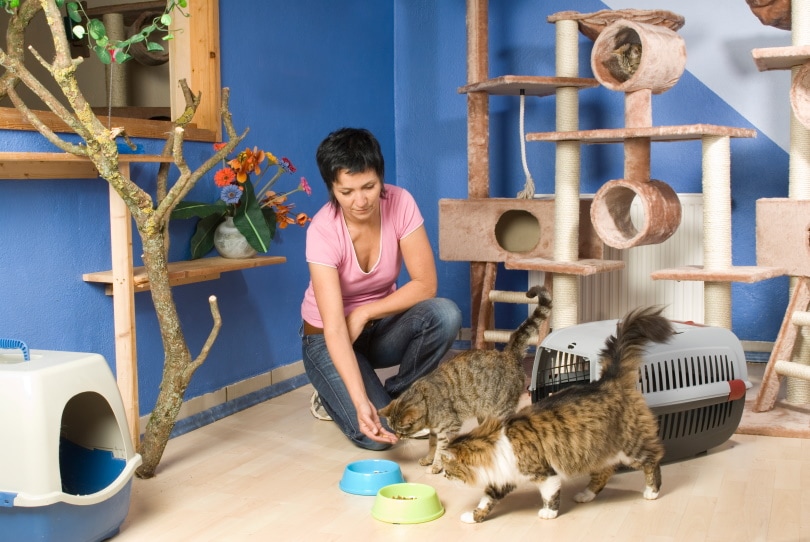
6. Keep Them Fit
If your fur baby is feeling down or depressed while trying to cope with arthritis, it’s up to you to keep its spirits high. And one of the best ways to do that is to treat it with delicious snacks. Showing that you care is just as important as letting it chew its way through a pack of crunchy treats.
With that, be very conscious about the fur bud’s calorie intake. Obesity is a huge problem for domestic felines, but for a cat with arthritis, it’s a disaster. All that extra pressure on the joints will make matters much worse for the feline. So, keep a strict balance between treating the pet and helping it maintain or lose weight. And just like with the meds and treatments, talk to a vet to come up with the right diet.
7. Talk to a Vet About Pain-Relieving Meds
Seeing our favorite balls of fur suffer from joint inflammation is the worst! But we’re happy to say that there are quite a few vet-approved meds that relieve the pain. So, after you set up the orthopedic bed and treat the kitty with a heating pad, consult with your veterinarian about these meds.


Medical and Supportive Care for Cat Arthritis
Osteoarthritis is a painful degenerative disease, and it progresses a bit differently in every cat. Thus, at-home remedies like pain-relieving meds and changes to the environment won’t always be able to yield the desired results. In that case, your vet may recommend adding some other options to your cat’s treatment plan:
These options can only be decided by your vet after a thorough examination of your cat.
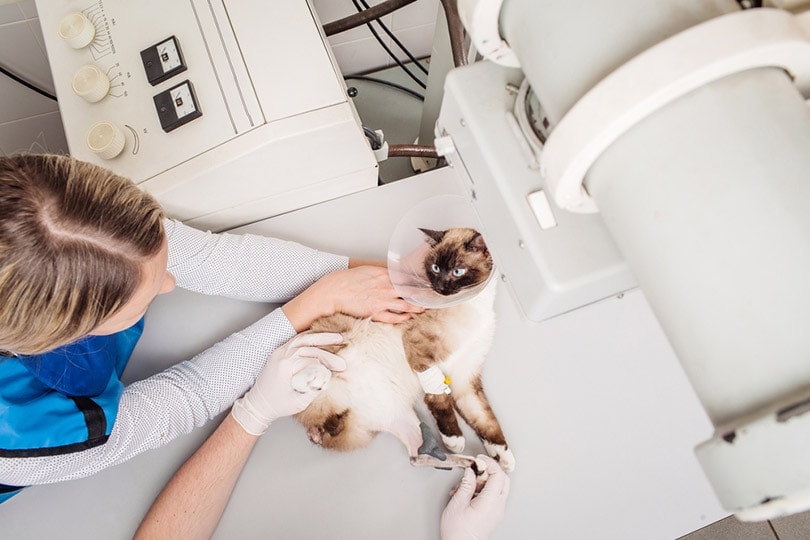
Which Cat Breeds Are Prone to Arthritis?
Unfortunately, certain breeds have a higher chance of getting arthritis because of a hereditary predisposition. These felines experience joint inflammation at a younger age compared to other breeds. And, when left untreated, arthritis turns into a much bigger problem for them. The list includes Siamese cats, Main Coons, and Persians, to name a few.
The good news is that if you have the cat checked at least once in 6–12 months, the veterinarian should be able to catch arthritis at an early stage. Early detection will help the four-legged family member avoid surgery, not to mention make their life a lot easier. Here’s a full list of the cat breeds with an increased risk of arthritis:


Summary
Arthritis is one of the most common cat diseases. When left untreated, it can make the kitty depressed and lifeless, not to mention lead to excruciating pain. Yes, it’s a very serious condition, and we as cat parents have an obligation to do everything in our power to help them and make their lives better.
Today, we learned how to make life a bit easier for a cat with arthritis by keeping it warm, cozy, well-fed, and groomed. As for the treatments, before you think about medication, make sure to talk everything over with a veterinarian!
Featured Image Credit: Pixel Shot, Shutterstock






